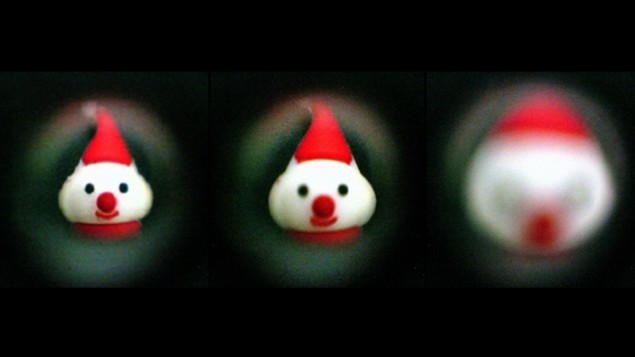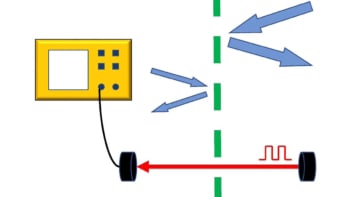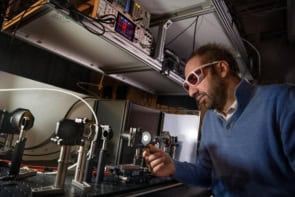
Materials scientists in China have used a novel electrically responsive fluid to create an adaptive liquid lens. The lens has a convex shape that changes its curvature when a voltage is applied, changing the lens’ focal length. The researchers say that this gives the lens eye-like functionality that could be used to create ultrathin lenses that can quickly adjust their focal point.
The human eye changes its focal length by changing the shape of the lens. The contraction and relaxation of ciliary muscles bends and changes the curvature of the lens. This allows you to rapidly switch from focusing on something close, like your phone, to something much further away, such as someone approaching from a distance. Inspired by this functionality, researchers at Hefei University of Technology used a new electrically responsive liquid, called dibutyl adipate, to create a liquid lens that can adapt and change its shape in a similar way. They describe the new lens in Optics Letters.
Dibutyl adipate has an electronegative molecular structure, meaning that it has a tendency to attract electrons. This means that if it is placed in an electrical circuit it will travel with the electrons towards the anode and accumulate on its surface. It is also transparent, making it ideal for use in a liquid lens.
To create the lens, Miao Xu and her colleagues filled an annular electrode with dibutyl adipate. The inside of the electrode was coated with a water-repelling layer that pushed the fluid away from the outer surface to form a convex, or dome, shape. When the researchers applied a direct current to the dibutyl adipate liquid, it moved with the charge towards the outer surface, the anode, causing the dome to drop and its shape and curvature to change. The shape of the convex surface is dependent on the voltage applied, and when the electric field is removed, the dibutyl adipate fluid returns to its original state and shape.
The researchers found that when they increased the voltage from 0 to 100 V, the focal length of the lens changed from 7.5 to 13.1 mm. Analysis showed that the resolution of the adaptive liquid lens can reach almost 29 lines/mm, which is higher than that of the human eye. This performance remained stable at temperatures ranging from room temperature to 100°C and the lens transmitted around 95% of visible light at wavelengths between 390 and 780 nm.
Its simple structure and excellent imaging properties make dibutyl adipate a promising candidate for fabricating novel adaptive liquid lenses, according to the researchers. As such lenses would be lightweight and compact, they could prove ideal for mobile phone cameras, endoscopes and machine vision applications.
“We developed an eye-like adaptive liquid lens that can be used to diverge or converge light by changing the shape of the dibutyl adipate liquid,” Xu says. “This type of adaptive liquid lens could one day replace conventional solid lens systems. This would enable a mobile phone camera that can rapidly change focal length while still being as thin as the phone itself.”
The researchers are now working to improve the performance of the lenses. Currently the response speed is a little slow, and they are also investigating ways to reduce the voltage needed to adjust the focal length of the liquid lens.


